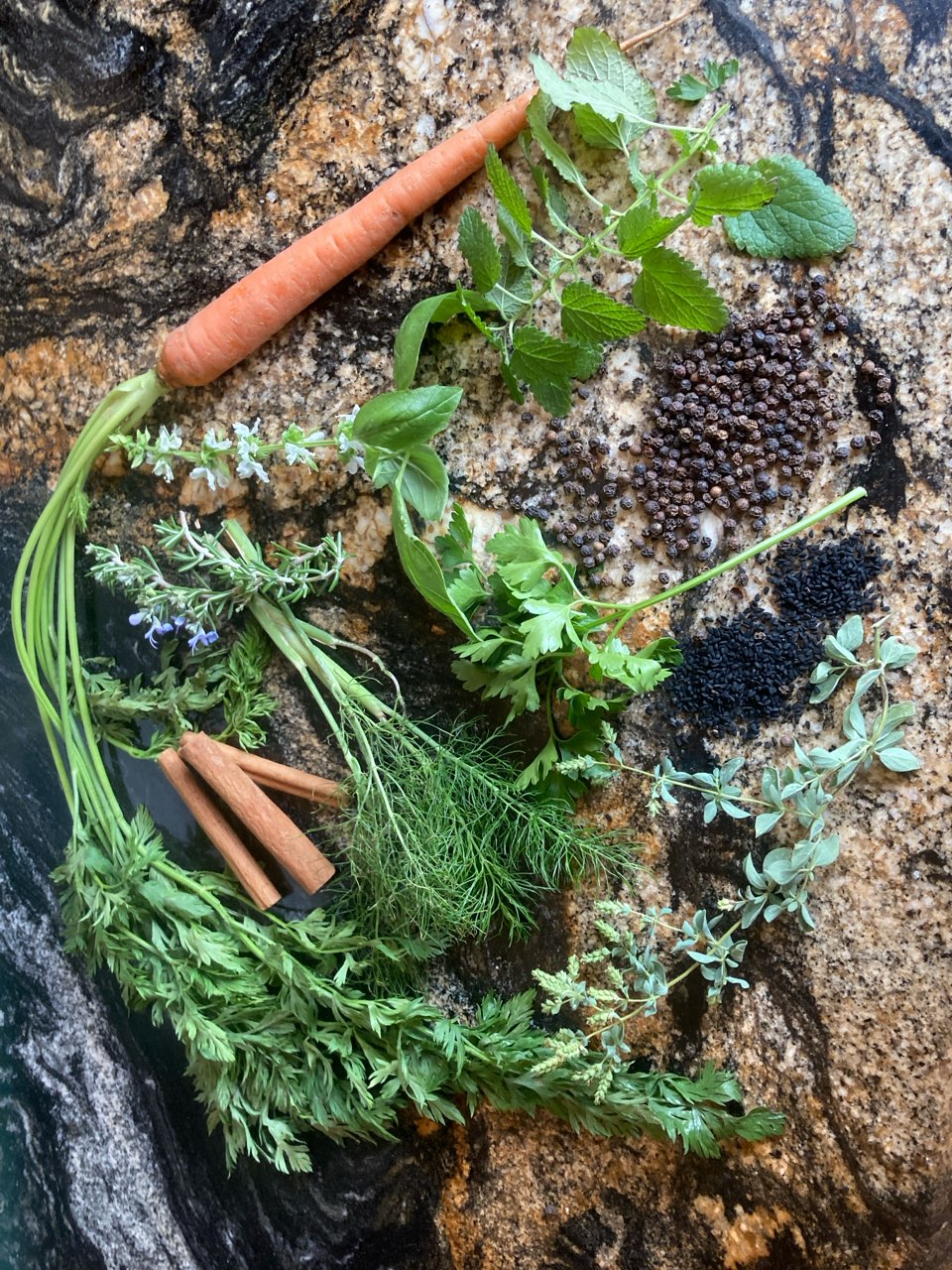

· By Gareld Eaton
The Endocannabinoid System: Part 4. More Than Just a Pretty Smell
In addition to the wide selection of foods containing fats and related fatty acid compounds in the prior post, there is another category of ECS-actives. These are the terpene-rich foods. Specific terpenes can act as partners with the classic endocannabinoids helping them work better. Or, they can work independently, via both cannabinoid and non-cannabinoid receptors to modulate the ECS. They are versatile! Here are some terpene-rich foods which impact our ECS:
Terpenes
Terpenes are the aromatic compounds which give flavor and aroma to many plants. They are abundant in cannabis (over 100 of them), and provide benefits to plants by attracting pollinators, increasing disease resistance and offering defense from predators, etc. These compounds benefit us, as well, when we eat them in foods. Until you know their safety profile, always ingest terpenes as part of foods.
Many fragrant spices, including basil, black caraway, black pepper, cinnamon, cloves, hops, lavender, lemon balm, oregano, rosemary, and thyme contain the terpene beta-caryophyllene. While abundant in cannabis, it is also found in many other plants. It has a strong affinity for the CB-2 receptor, activating it. It has a woody fragrance, and many biological actions. Animal research shows it to be anti-bacterial, pain-relieving, antioxidant, gastro-protective, anxiety-reducing, anti-inflammatory and anti-cancer. Spice it up!
Black pepper, while strongly abundant in beta-caryophyllene, it is also very rich in other terpenes, including limonene, pinene and at least 50 more, offering a pharmacy of benefits. Black pepper has another terpene which inhibits anandamide and 2-AG uptake, keeping more of them around longer. This is due to the action of guineensine, a novel plantcompound. Black pepper can increase the absorption of many nutrients, and is anti-inflammatory, antioxidant, heart-protective and strongly anti-microbial. There is some buzz that chewing black peppercorns can reduce the anxiety from excess cannabis intake. Experiment for yourself, as research has yet to confirm this.
Carrots, and their parsley, parsnip, celery, and fennel relatives, all contain the terpene falcarinol, an anti-inflammatory and anti-cancer compound which binds CB-1 receptors, and blocks CB-1 activity.
Purslane, an amazingly nutritious and medicinal vegetable, is rich in plant Omega-3 fats, known to impact our ECS. It also contains a terpene pristimerin, which inhibits the breakdown of 2-AG, keeping more around longer. Pristimerin is anti-cancer, anti-inflammatory, anti-microbial and anti-oxidant in animal studies.
Research has found that some of Cannabis sativa’s own terpenes, in addition to beta-caryophyllene, interact directly with the endocannabinoid system, even when separate from the cannabis plant. They produce additive effects when combined in cannabis and in foods (the entourage effect). The terpenes alpha-humulene, beta-pinene, linalool, and geraniol all bind and activate the CB-1 and CB-2 (and other) receptors, acting through complex pathways. Ingesting foods which contain them will benefit our health (most terpenes are anti-oxidant, anti-inflammatory, and anti-microbial) and impact our endocannabinoid system. I’ve included the most common foods where they are found below, but it is not a comprehensive list:
Alpha-humulene is found in basil, black pepper, cloves, ginger, oregano, rosemary, and sage.
Beta-pinene is found in basil, cumin, nutmeg, parsley, and orange peel.
Linalool is found in basil, bay laurel, cinnamon, citrus, coriander, grapes, lavender, mints, oregano, pineapple, and thyme.
Geraniol is found in roses, lemongrass, geranium, citrus fruit, lemon thyme, coriander, and berries.
Animal foods also contain terpenes! These come from their diet, and accumulate in their milk and meat, especially in pastured and grass-fed animals.
Eating foods (mostly plants, but some animals) which contain terpenes may help keep the ECS toned-up. More research will yield greater understanding of terpenes and their role in the ECS.
TL;DR Terpenes help the endocannabinoid system work better (the entourage effect), and can activate our ECS receptors. Terpenes are found in many spices and in other plants (and also in some grass-fed, pastured animals). Enjoy them from your foods, but do not eat them as isolated terpenes.
In addition to all these above terpenes and their foods that contain them, are there some other aspects of our diet that help our ECS? Stay tuned for Part V.

